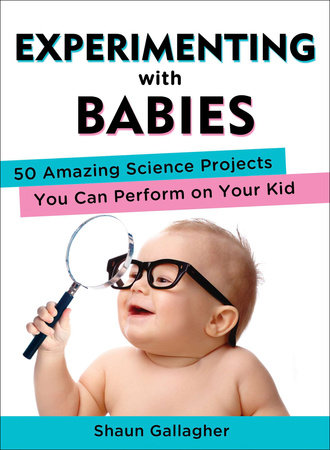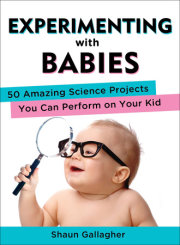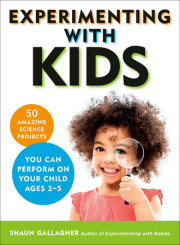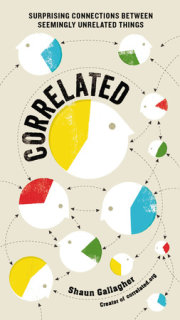When I was a kid, I begged Santa Claus for a Radio Shack 50-in-1 Electronic Projects Kit. The kit consisted of a “circuit board” with numerous capacitors, resistors, LEDs, and a buzzer for auditory output. For each project, you would connect various components with wires and then flip a switch and see what happens. It was great fun, and it contributed to my continued interest in science and engineering.
Now that I’m a parent, though, I’ve outgrown the Radio Shack science kit and moved on to an experimental apparatus of significantly higher complexity: the baby.
My kids are the most fun, intriguing, surprising (and exhausting) research subjects I have ever had the privilege to conduct weird and wacky experiments on. I’ve spent hours upon hours trying to figure out the optimal way to hold a baby to get him to fall asleep quickly—only to discover, as many parents have, that what works for one baby does not work at all for another. I’ve tried at least 20 different techniques to get a toddler to eat his peas. (The winner: “Please, whatever you do, don’t eat your peas.”) I’ve tracked my baby’s acquisition of fine motor skills based on how gently he touches my face— it progresses from painful scratching to awkward poking to soft whisker stroking. I’ve seen how early babies’ unique personalities emerge. Even at a few weeks old, you can already sense how their gears are turning by the way they look at you and observe the world around them. And there is something especially fascinating about conducting research on babies, who are themselves conducting experiments all the time—which typically take the form, “What is this thing, and what does it feel like in my mouth?”
Before you begin experimenting on your own baby using the projects in this book, it’s important to be aware of a few caveats:
• The projects in this book are not designed to assess your baby’s physical or mental health, intelligence, or any other aspect of his motor, cognitive, or behavioral development, nor are they intended to tell you whether your baby is developmentally on schedule or whether he measures up. Rather, they’re intended to demonstrate principles of infant development in a fun, easy-to-digest way. So don’t approach these projects as challenges that your baby must complete in order to keep up with the Joneses’ kid (or the Einsteins’).
• Although suggested ages and age ranges are included in the projects, they should be considered fuzzy rather than firm, so don’t worry if your child is not able to perform a certain task described in one of the experiments. When possible, I’ve included milestone information instead of a strict age range, such as “once your baby is walking independently.
• In many of the original studies cited in this book, a number of children were tested but excluded from the results due to common problems such as fussiness, crying, or inability to complete a qualifying requirement. In some cases, certain results were excluded because a child’s behavior was substantially different from the majority of those studied. So if you attempt an experiment, but your baby is not able to complete it or your results are quite different from those described in the study, don’t worry! It’s not out of the ordinary.
• In adapting published, peer-reviewed academic studies to parent-friendly exercises that require no special equipment or training, I’ve had to take some liberties that may affect the degree to which your results line up with those of the source material. For instance, in most published studies, children are separated into groups, and each group is assigned a different condition. One group is the “test” group, and another is the “control” group, allowing the researchers to compare the results across the two groups. In many of the projects in this book, you’ll instead conduct all of the conditions on the same child—your baby—separating each trial by a length of time. The former methodology is, of course, preferred in professional contexts, but because this is a book of at-home experiments, it’s more practical for parents to simply repeat the experiments, rather than recruit a bunch of neighborhood babies for a well-controlled study. (If you happen to have identical twins on hand, you can more closely replicate the control and test model. Then again, you might not have that much free time.)
As you work through the 50 experiments in this book, I hope they give you new insight into the various fields of child development—but most important, I hope you come away with many new insights into your own amazing little science projects.
Copyright © 2013 by Shaun Gallagher. All rights reserved. No part of this excerpt may be reproduced or reprinted without permission in writing from the publisher.





